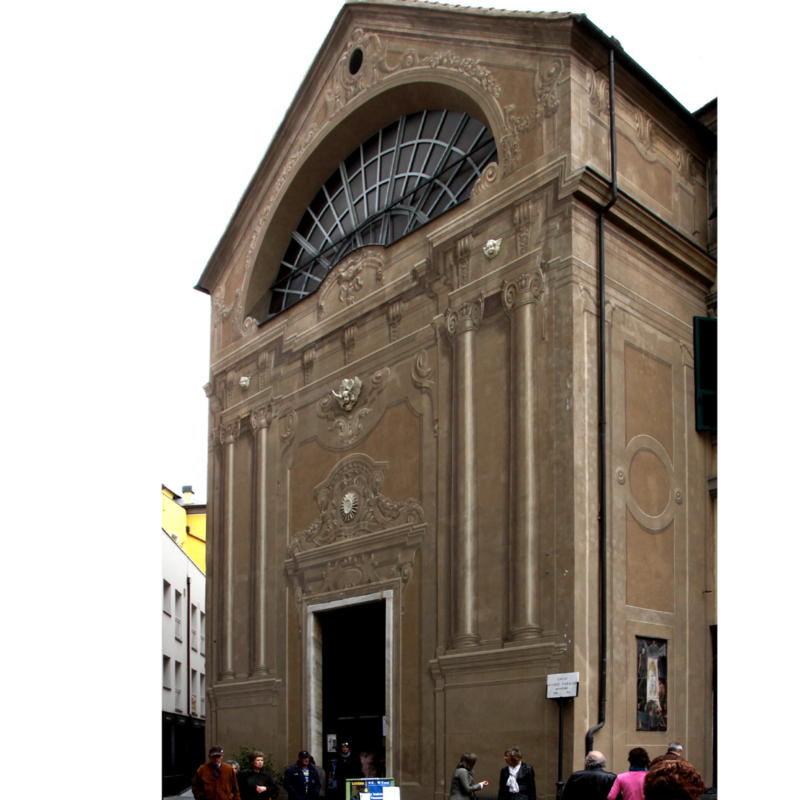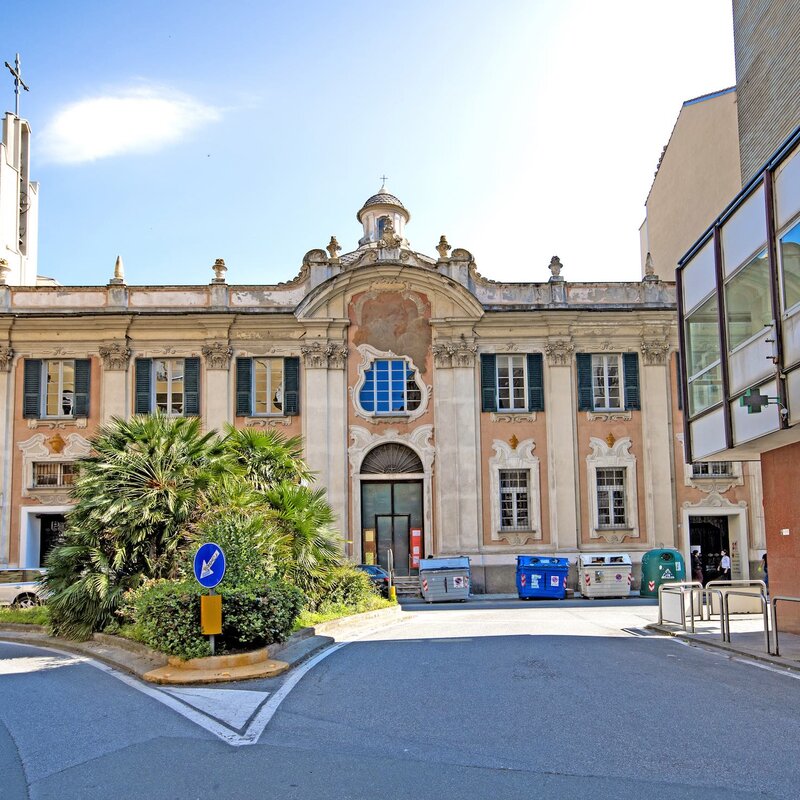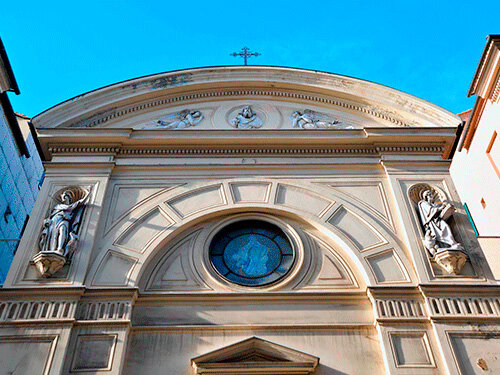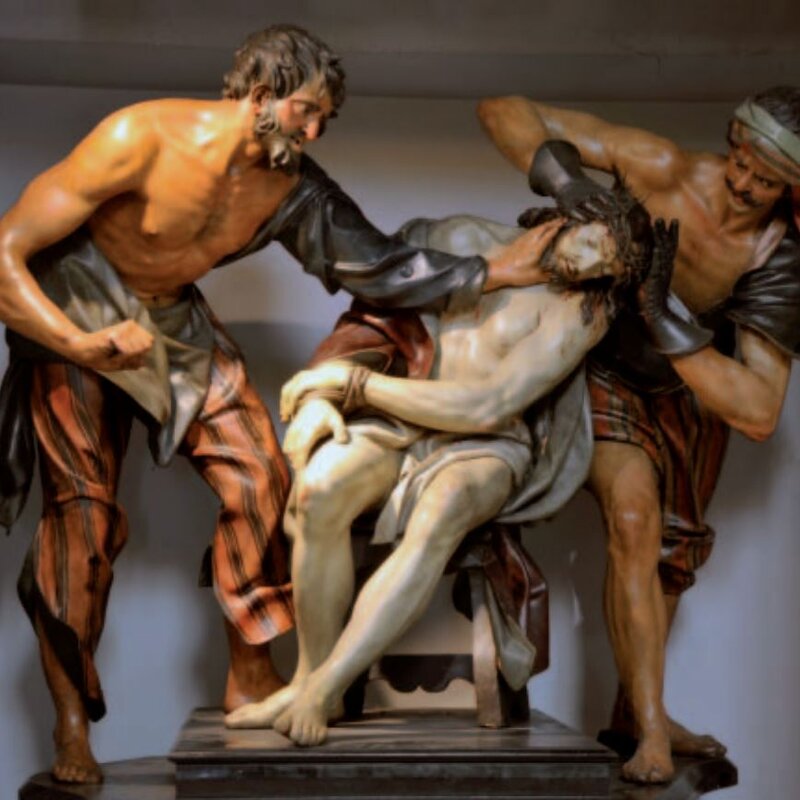Oratory of the Confraternity of our Lady of the Castle
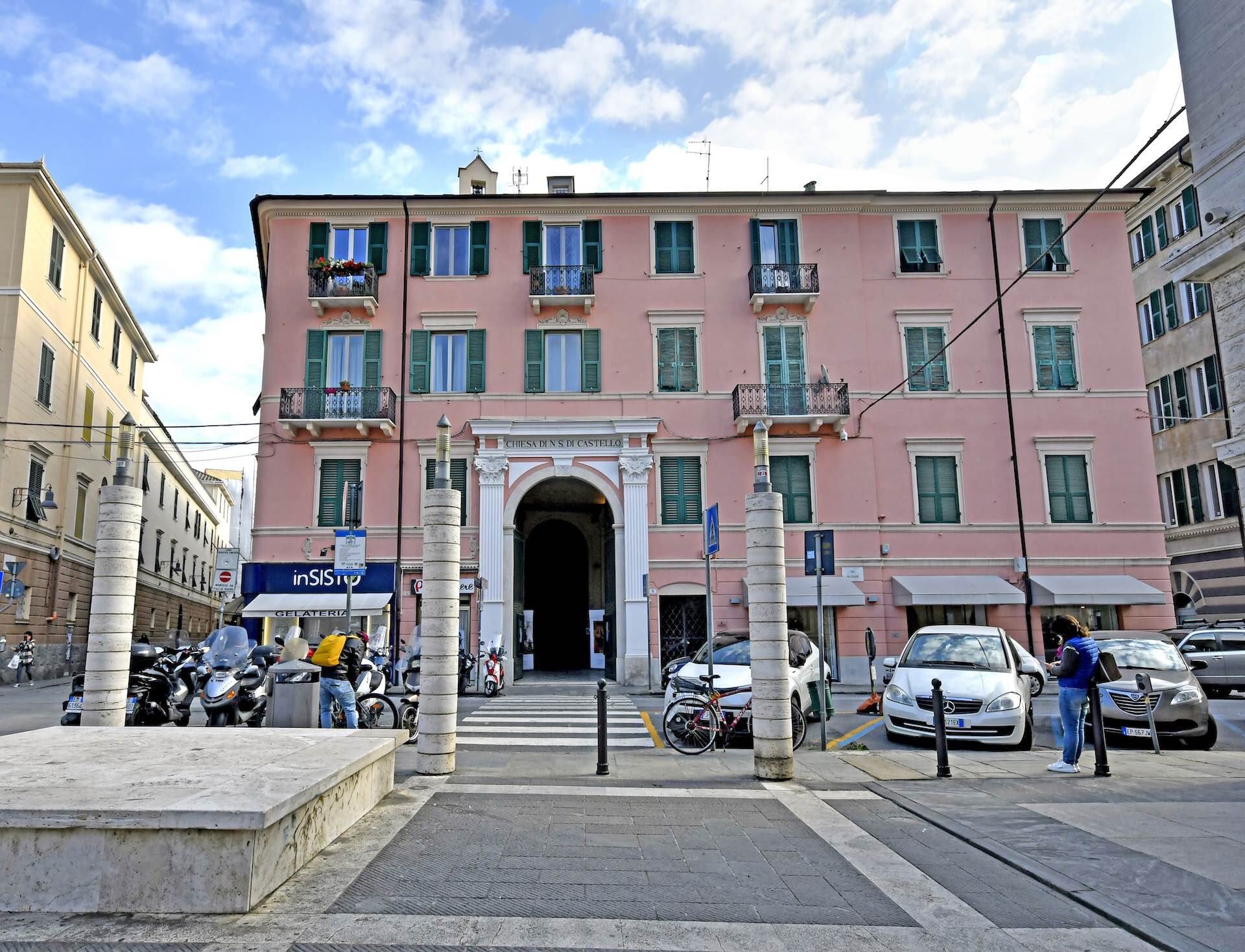
The seat of the oldest confraternity in Savona, dating back to 1260, the present-day building is the product of a series of remodelling efforts undertaken over the centuries. Its origin can be traced back to 1544, but the current outer structure dates from 1755, when it was rebuilt after a major fire. The Oratory is named after the Cattedrale di Nostra Signora di Castello, which was sitting right behind it.
The façade of the building is difficult to make out, inextricably integrating with the surrounding 18th century palazzos, defining its external appearance. The only element that helps identifying it is the white marble plaque above the main door. It is quite unbelievable how such a remarkable building can almost go unnoticed from the outside. The interior features a single-nave layout, in rococo style, and is decorated exclusively with stuccoes.
The eye is quickly caught by the imposing polypthyc in the apse area: a “Madonna and Saints” by Vincenzo Foppa, eventually finished by Lodovico Brea. With its large size and extensive amount of gold used, it almost gleams in the monochrome interior of the building. Born in a small village near Brescia, between 1427 and 1430, Vincenzo Foppa is regarded as one of the main Renaissance painters in Northern Italy.
He only came to Liguria twice: the first time to work on a commission received from the Doria family; the second time, a few years later, in 1489, to produce this slightly archaic looking polypthyc. The Oratory also houses three interesting processional floats, depicting a “Deposition” by Filippo Martinengo, a “Dead Christ” of 16th century Roman school and a “Pietà” by Stefano Murialdo.
